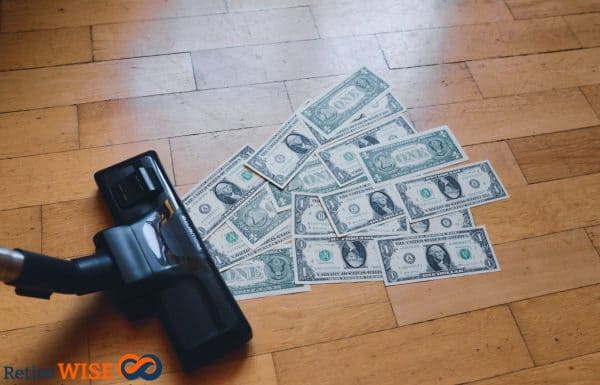Various debates are happening on different platforms on the stand that must be taken in these volatile and patience-testing times. Certain mutual fund companies have started to suggest value averaging. But what is this concept and does it has an edge over the Rupee Cost Averaging or what we call SIP (Systematic Investment Plan) in simple words?
Both, Rupee Cost averaging and Value Cost Averaging are important tools of mutual funds that help investors to get maximum value for their invested money in volatile scenario. One is an auto mode-investment and second is tactful move but can it help to sort the dilemma of whether to keep investing when markets play their games. Let’s see both options in detail.

Image courtesy of Stuart Miles at FreeDigitalPhotos.net
What is rupee-cost averaging?
Investors generally tend to speculate on the right time to invest. But it is a known fact that no one can predict where the market is going to move-upwards or downwards. Rupee-cost averaging has been the answer to such a scenario.
With rupee-cost averaging, an investor invests a specific amount at regular intervals irrespective of the investment’s share (unit) price. By investing regularly, the investor takes advantage of market dips without worrying about when they’ll happen. Their money buys moreunits when the price is low and fewer when the price is high, which can mean a lower average cost per unit over a period of time.
The key factor of rupee-cost averaging is commitment. How frequently an investor invests (weekly, fortnightly, monthly or quarterly) is not that much relevant in long term? What matters is to stick to his investment mode in tougher times like we experiencing now.
Read: KISS strategy in Finance
How does Rupee Cost Averaging works when prices are moving upwards and downwards?
Below are the two examples to see what an investor’s average price per unit would be when prices are rising and when prices are falling.
Unit price is rising scenario. Rs.1000 is invested in a mutual fund on the first of each month. The investor in this example would methodically acquire 244.53 units at an average cost of Rs.24.54 each
Rupee-Cost Averaging (unit price rising scenario)
|
Month |
Amount Invested |
Unit Price |
No. of units purchased |
|
15-Jan |
Rs 1000 |
20 |
50 |
|
15-Feb |
Rs 1000 |
22 |
45.46 |
|
15-Mar |
Rs 1000 |
23 |
43.48 |
|
15-Apr |
Rs 1000 |
25 |
40 |
|
15-May |
Rs 1000 |
30 |
33.33 |
|
15-Jun |
Rs 1000 |
31 |
32.26 |
|
|
Total: Rs 6000 |
Avg Cost:Rs 24.54 |
Total:Rs 244.53 |
Unit price falling scenario. Rs.1000 is invested in a mutual fund on the first of each month. The investor in this scenario would have bought 204.87 units at an average cost per unit of Rs.24.91.
By comparing, someone who invested the entire Rs.6000 in January at Rs.35 per unit would have owned only 171.43 units, and the investment would have been worth only Rs.4285.75 at the end of the period.
Rupee-Cost Averaging (unit price falling scenario)
|
Month |
Amount Invested |
Unit Price |
No. of units purchased |
|
15-Jan |
Rs 1000 |
35 |
28.57 |
|
15-Feb |
Rs 1000 |
33 |
30.30 |
|
15-Mar |
Rs 1000 |
30 |
33.33 |
|
15-Apr |
Rs 1000 |
28 |
35.71 |
|
15-May |
Rs 1000 |
27 |
37.03 |
|
15-Jun |
Rs 1000 |
25 |
40 |
|
Total: Rs 6000 |
Avg Cost: Rs 29.29 |
Total: Rs 204.87 |
What is Value Cost Averaging and how it differs from Rupee Cost Averaging?
What investor want is to Buy low and Sell high. So, while investing regularly through systematic investment plan (SIP), investor tends to average his rupee cost on investments. Generally investors follow this standard technique called SIP to invest regularly into mutual funds. But people investing in equity direct follow a different strategy called the Value Cost Averaging (VIP). It was given by Michael Edelson of Harvard Business School.
VIP/VCA is an investment tool in which an investor would invest at regular intervals for a pre-defined period in particular mutual fund scheme. Their periodic investment amount in mutual fund scheme would vary due to market volatility. Through this technique an investor ensures that his portfolio value rises by a specified amount at each installment irrespectiveof market movements. It helps to achieve the investor’s financial targets in a better way. (Theoretically)
Suppose that an investor has Rs 2,000 invested and the goal is for the portfolio to increase it by Rs200 every month. Now in the first month itself the portfolio grows to Rs2,024, the investor will buy the units worth Rs176 only (2200 – 2024) since his target is to reach Rs 2200. In the next month, the goal would be to have portfolio value of Rs2,400. No if the market falls and value of portfolio is Rs 2176, the investor will buy units for Rs 224 (2400-2176). This pattern is repeated in the following month.Investor continues to buy in such a way that his predefined value of portfolio is achieved at each revaluation point.
So, when market is declining, he is required to purchase relatively more units to maintain his portfolio value. Similarly, when market is rising, he is required to purchase relatively few units or might even redeem some units to maintain his portfolio value at the desired level in particular month.
Rupee Cost Averaging Vs Value Cost Averaging
Below are the Illustrations to differentiate better between Rupee Cost Averaging and Value Cost Averaging.
Rupee Cost Averaging
| Month | NAV | Amount Invested | Units purchased | Net Units |
| Jan | 10 | Rs 1000 | 100 | 100 |
| Feb | 12 | Rs 1000 | 83.33 | 183.33 |
| March | 9 | Rs 1000 | 111.11 | 274.44 |
| April | 8 | Rs 1000 | 125 | 419.44 |
| May | 10 | Rs 1000 | 100 | 519.44 |
| Total | Rs 5000 | 519.44 |
Value Cost Averaging (hypothetical)
| Month | NAV | Amount Invested | Units purchased | Net Units |
| Jan | 10 | Rs 1000 | 100 | 100 |
| Feb | 12 | Rs500 | 41.66 | 141.66 |
| March | 9 | Rs1200 | 133.33 | 274.99 |
| April | 8 | Rs1500 | 187.5 | 462.49 |
| May | 10 | Rs800 | 80 | 542.49 |
| Total | Rs 5000 | 542.49 |
*Real numbers may be totally different from above shown example.
Advantages of Rupee Cost Averaging (SIP)
- Averaging reduces the risk factor associated with lumpsum investing. For example we all are familiar with the scenario where investors who invested their money at one go when market was at its peak in the year 2007-2008 what their plight was when market crashed drastically in the year 2008. With RCA, investors get a buying opportunity when the NAV falls as he will be able to accumulate more units of the mutual fund scheme.

- RCA frees investors from the onus of monitoring stock positions on a daily basis which would be the scenario in case of lumpsum investment or VCA.
- It serves as a cushion against the downward trend of the market.
- Investor no longer needs to look at dates, markets or anything.
- Investor no longer needs to monitor external factors like economy condition, interest rates, inflation etc.
- It is a disciplined approach towards investing regularly in mutual funds.
Disadvantages of Value Cost Averaging (VIP)
- The technique may work well in volatile markets but is not useful in stable markets or bull markets or long bear markets.
- It edge over RCA only when the market is perfect, trends are predictable and asset prices move in known ranges. This is a hypothetical scenario.
- If an investor is looking for a period of 15-20 years of investing, VCA cannot be used as it lacks discipline.
- In longer tenure say 15-20 years the difference between exact timing and awkward timing averages out and is very close to RCA method. So why take mental stress?
If the rain is good, a farmer does not decrease the distance between the two saplings that he sows in order to get more yield. Share your thoughts on this in the comments section.

























Hi Hemant,
Another informative article! I think RCA is good for long term investment but VCA will yield good results if someone wants to abruptly exit from MF.
Do you agree?
Hi Ankit,
Its the matter of discipline. Yes VCA may yield good results in some instances but its difficult to time the market and so difficult to implement.
Dear Hemant,
Thanks a lot for this very helpful article for MF investors of our country.
I want to know whether VCA is available with our MF schemes .
In any case, SIP , as you have rightly illustrated , is an affordable option for the common man with regular income , to invest for his long time needs in a simple and hassle-free manner . Only that it is still not very popular in rural areas where the investment mentality needs to be created properly and encouraged.
I congratulate TFL teams for this kind of presentations which are easy to follow . Please continue to publish such articles on personal finance regularly !
Devadoss Eswar,
Trivandrum.
Thanks Mr. Devadoss
Hi
Excellent — Informative and well written.
I have done some calculations with SIP and Value Averaging with some good funds. I found that if your time horizon is more than 4 to 5 year then Value Averaging will give you less return. While if your time horizon is less then 5 years then it is good. The present situations like 2008-2013 may give you good results in Value Avg. But in situations like 2004-2008 this will give you very bad results in comparison to SIP.
Quite Informative…
@ Devadoss Eswar Fundsindia offers a VIP option.
I have made two studies on SIP vs VIP.
one based in mutual funds based on report released by Funds and one based on monthly sensex returns.
In both studies, for a given goal, there is a very good chance that we will end up investing much more than a SIP and still not attain a target.
Most people say VIP gives higher returns than SIP. This comes at a price. The total investment needed is much higher than SIP.
As Hemant points out best to keep it simple, start a SIP and whenever we have some money we buy when the market crashes by say, about 2%
Hi Hemant,
I feel that Rupee cost averaging is always a better option as it brings in discipline and it does not require the investor to keep on tracking the market. However, Value averaging depends on market volatility and the investor has to keep an eye on the market..
The article is very good…
for many years i didnt invest in shares
they are all too confusing
after reading your blog i am now confident about share market
Hi Hemant,
Very good comparision betn. two strategies. HDFC MF is providing VCA ( based on formula ) thr its Swing STP. No need to keep track of market once you start STP.
Hi!
I came across this article today and went through some of the past articles. I am now wondering why I didn’t come across this blog earlier.
Thanks. And keep up the good work. This blog has a rich mine of information.
Hi Hemant,
This is Sandhya.your all the articals are very good..very well explained…interesting and useful information.
Hemant,
I have been following all your articles from past few months. They are all informative and keep up your good work. Some how, I missed this article – I have gone through it today.
Writing a detailed and bit long comment as I want to clear my self.
Coming to this article; the example given for SIP Vs VIP:
— SIP numbers given by you are correct.
— VIP, you have not followed same approach it seems.
I.e, means through SIP if we invest Rs:1000/- for month; Through VIP also, our target of portfolio has to be Rs:2000/- for 2 months; Rs:3000/- for 3 months.
I have calculated like that and has understood that VIP is beneficial compared to SIP interms of profit or even in loss also.
I have taken different NAV’s to compare SIP and VIP.
a) Random NAV’s given by you in this post
b) Another set of Random NAV’s
c) Real NAV (Axis Long Term Equity)
I was not able to post those metrics (Excel Sheet or as Images) here. Is there any way to post those pics. Then I can provide here.
Can you please clear me, if I misinterpreted some thing wrong.
Thanks in Advance
@mar.
Amar,
Hemants method of calculating VIP is correct.
Can you please explain what you mean by, “Through VIP also, our target of portfolio has to be Rs:2000/- for 2 months; Rs:3000/- for 3 months.”?
I have done VIP vs SIP analysis over a period of several years using MFs and Sensex. Click on my name to go to my blog.
As noted in my comment above, one ends up investing a lot of money for a little more returns in VIP.
I will be interested in seeing your analysis. If you wish you could send them to me: pattu [AT] iitm.ac.in
my name is anand. I am an lic agent. the government provided the new pention system card to me. my permanent registration account number is 500060469838. please tell me how to get my permanent account details. if u have that details please sent to above mentioned mail Id.
Hi Anand,
You can get the details from nsdl-cra.
Which AMC do VCA.
if you invest in Batter SIP The You Get The Proper And Best to b Best Return as Compare to LIC
Hello Hemant, I have been following your articles since a month and they are very informative. This article is no different. However, I had a question, what would be the result if one invests in SIP of a fund that works on VIPs?
Comments are closed.